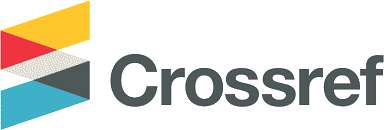THE INFLUENCE OF LEADERSHIP STYLE AND CREATIVE SELF-EFFICACY ON PERFORMANCE OF EMPLOYEES PT. AHRS
DOI:
https://doi.org/10.33197/jbme.vol22.iss2.2024.2663Keywords:
Leadership Style, Employee Performance, Creative Self-efficacyAbstract
The creative industry itself is a collection of economics derived from the use of skills, from one's talents to create prosperity and employment for many people. The creative industry in Indonesia is actually growing, this is proven by contributing 7.55 percent in 2020 to the total national economy with a total GDP of around IDR 1.211 trillion. This is marked by the outbreak of the types of automotive creative industries that have emerged and can lead to increasing fierce competition in the creative industries. The purpose of this study was to determine whether there was an effect of Leadership Style and Employee Performance Creative Self-efficacy at PT. AHRS, AHRS is a company engaged in the automotive sector. Respondents involved in this study were 68 people, the method used was descriptive and verification method with Non Probability Sampling technique. Data was collected by distributing questionnaires, the data analysis method was carried out by multiple linear regression using SPSS software. Based on the research, it can be said that periodically the Leadership Style and Employee Performance significantly affect Creative Self- Efficacy. Simultaneously there is a significant influence of Leadership Style and Employee Performance simultaneously on Creative Self-efficacy.
Downloads
Downloads
Published
How to Cite
Issue
Section
License
Copyright (c) 2025 Muhammad Rezqi Rizqullah

This work is licensed under a Creative Commons Attribution-NonCommercial-ShareAlike 4.0 International License.
Submission of a manuscript implies that the submitted work has not been published before (except as part of a thesis or report, or abstract); that it is not under consideration for publication elsewhere; that its publication has been approved by all co-authors. If and when the manuscript is accepted for publication, the author(s) still hold the copyright and retain publishing rights without restrictions. Authors or others are allowed to multiply the article as long as not for commercial purposes. For the new invention, authors are suggested to manage its patent before published. The license type is CC-BY-SA 4.0.













